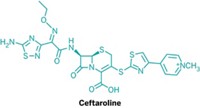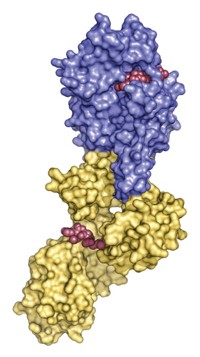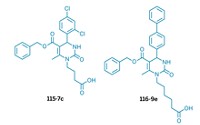Advertisement
Grab your lab coat. Let's get started
Welcome!
Welcome!
Create an account below to get 6 C&EN articles per month, receive newsletters and more - all free.
It seems this is your first time logging in online. Please enter the following information to continue.
As an ACS member you automatically get access to this site. All we need is few more details to create your reading experience.
Not you? Sign in with a different account.
Not you? Sign in with a different account.
ERROR 1
ERROR 1
ERROR 2
ERROR 2
ERROR 2
ERROR 2
ERROR 2
Password and Confirm password must match.
If you have an ACS member number, please enter it here so we can link this account to your membership. (optional)
ERROR 2
ACS values your privacy. By submitting your information, you are gaining access to C&EN and subscribing to our weekly newsletter. We use the information you provide to make your reading experience better, and we will never sell your data to third party members.
Biological Chemistry
Sweeter Enzyme Inhibitor
A novel glycosyltransferase inhibitor could aid glycobiology research and drug discovery
by Stuart A. Borman
April 19, 2010
| A version of this story appeared in
Volume 88, Issue 16
A glycosyltransferase (GT) inhibitor with a novel mechanism of action could aid glycobiology research and drug discovery, according to a report in Nature Chemical Biology (DOI: 10.1038/nchembio.343). GTs are enzymes that extend oligosaccharides or add sugars to proteins and lipids. They play many roles in cell signaling, adhesion, and recognition. Researchers would like to design potent GT inhibitors to intercede in those processes, but the inhibitors developed to date are primarily substrate mimics with lackluster activity. Now, a small molecule that acts in a different way to inhibit one type of GT—galactosyltransferase (GalT)—has been developed by Gerd K. Wagner of the University of East Anglia, in England; Monica M. Palcic of Carlsberg Laboratory, in Copenhagen; and coworkers. For GalT to work, it must adopt a closed conformation stabilized by a tryptophan-arginine interaction. Instead of just sitting passively in the active site, the new inhibitor has a 5-formylthien-2-yl substituent that blocks formation of the closed conformation. It is thus twice as potent as earlier GT inhibitors and could be further optimized, the researchers note. The new inhibitor is effective against five different GalTs, and the researchers believe other inhibitors that function the same way will work against other types of GTs.





Join the conversation
Contact the reporter
Submit a Letter to the Editor for publication
Engage with us on Twitter